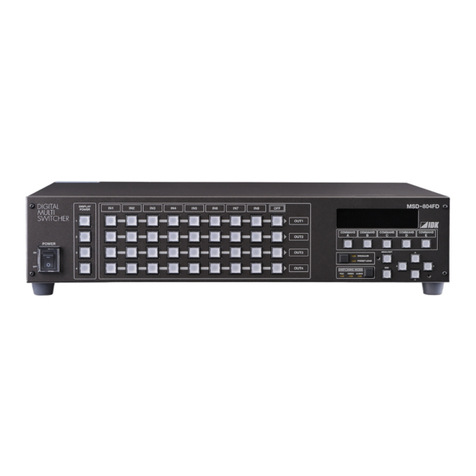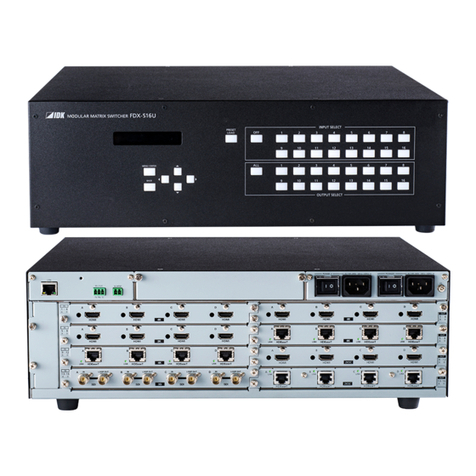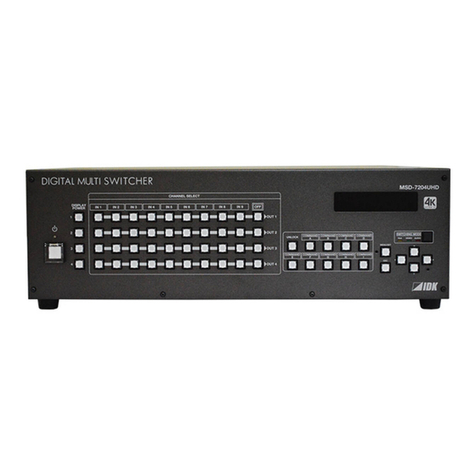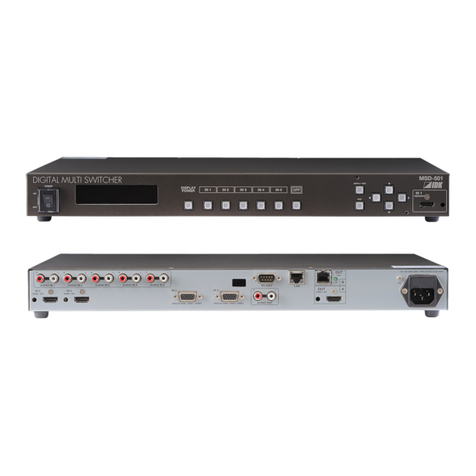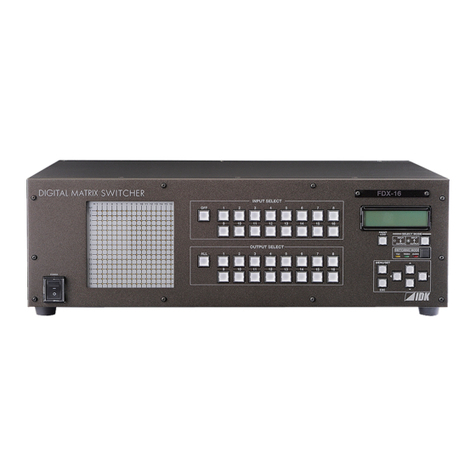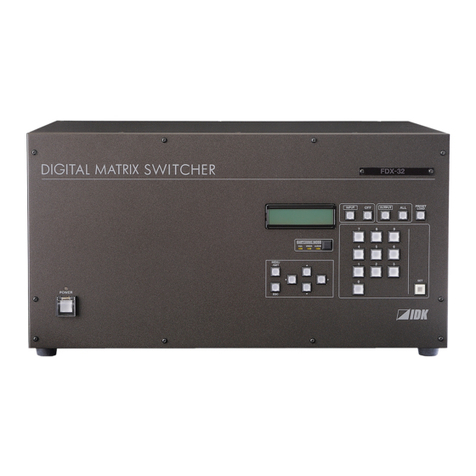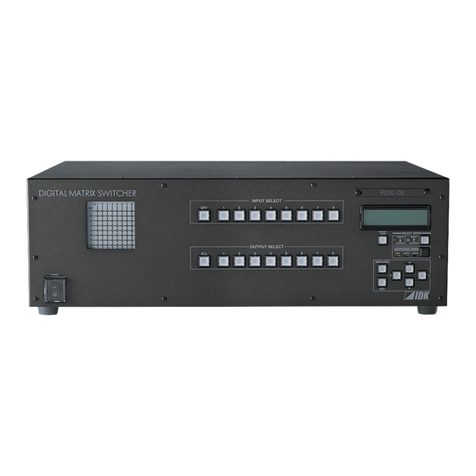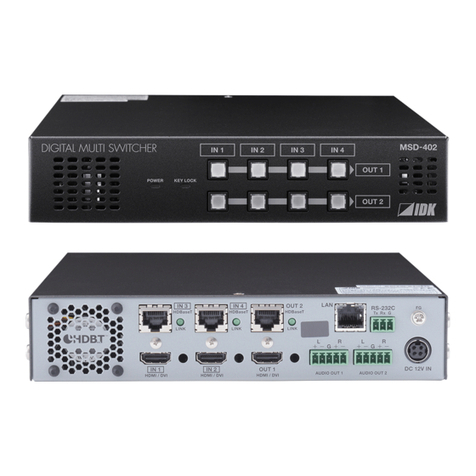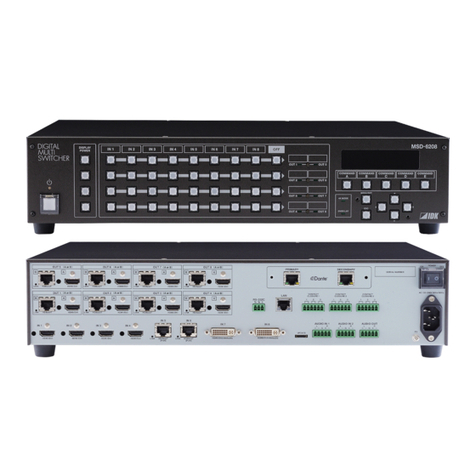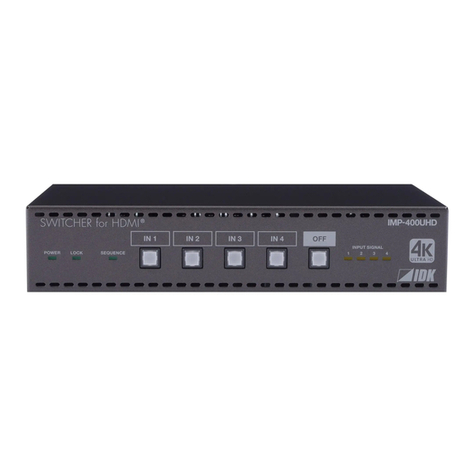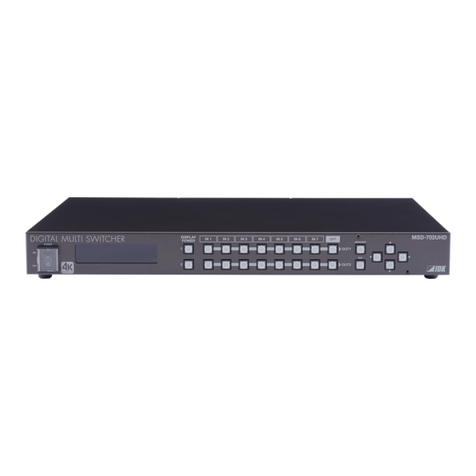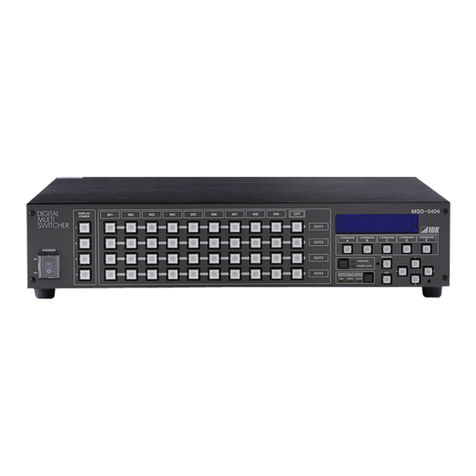
MSD-72 series Command Guide
4
Table of Contents
1About this Guide................................................................................................................................... 5
2Specification and Setup of communication............................................................................................ 6
2.1 RS-232C communication................................................................................................................. 6
2.1.1 RS-232C connector specification.............................................................................................. 6
2.1.2 RS-232C communication specification...................................................................................... 7
2.1.3 Setting up RS-232C communication......................................................................................... 8
2.2 LAN communication ........................................................................................................................ 9
2.2.1 LAN connector specification..................................................................................................... 9
2.2.2 LAN communication specification............................................................................................. 9
2.2.3 Setting up LAN communication................................................................................................10
2.2.4 The number of TCP-IP connections.........................................................................................12
3Command ...........................................................................................................................................13
3.1 Command outline...........................................................................................................................13
3.2 Command list .................................................................................................................................14
3.3 Detailed descriptions......................................................................................................................19
3.3.1 Error status.............................................................................................................................19
3.3.2 Power status...........................................................................................................................20
3.3.3 Input channels.........................................................................................................................20
3.3.4 Position, size, and masking.....................................................................................................22
3.3.5 Image quality...........................................................................................................................34
3.3.6 Input settings...........................................................................................................................39
3.3.7 Input timing.............................................................................................................................43
3.3.8 Output settings........................................................................................................................51
3.3.9 Audio......................................................................................................................................59
3.3.10 EDID.......................................................................................................................................67
3.3.11 RS-232C communication.........................................................................................................74
3.3.12 LAN communication................................................................................................................75
3.3.13 Control commands..................................................................................................................79
3.3.14 Preset memory........................................................................................................................93
3.3.15 Bitmap ....................................................................................................................................99
3.3.16 Other settings........................................................................................................................106
